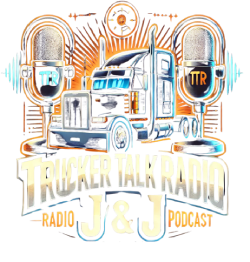Addressing Phantom Damage Misuse
The issue of phantom damages is increasingly recognized as a contributor to social inflation, with ongoing debates in many states regarding their permissibility as part of tort reform. Concerns revolve around potential exploitation of phantom damages, evidenced by:
- Excessive costs for back surgeries: Procedures like lumbar spinal fusion can cost between $50,000 and $80,000, leading to potential five-figure gains for attorneys via phantom damages. Some firms have claimed billings exceeding hundreds of thousands of dollars for minor treatments in low-speed collisions.
- Claims of unrelated injuries: Victims might report new symptoms long after an accident to justify the need for costly treatments that aren’t related to the incident.
- Inexperienced medical practitioners: Patients may be referred to medical professionals lacking the necessary qualifications, resulting in misdiagnoses.
- Varying payment practices: Payment inconsistencies across states can lead to discrepancies in compensation for similar treatments, reducing predictability in case loss reserving.
Embrace the Maryland Model
Maryland stands out by enforcing a Total Cost of Care (MD TCOC) model, unifying pricing for medical services across all payers at the same hospital. This consistency reduces unexpected bills for patients and ensures predictability for hospitals and insurers. The Maryland model aims to enhance public health and lower the rate of avoidable hospital visits.
Maryland’s TCOC is credited with keeping average employee health insurance premiums lower than in neighboring states. As shown in Figure 1, Maryland’s residents generally pay less for health insurance than those in surrounding areas.
Figure 1: Average Health Insurance Costs
Source: Cassidy Horton and Kelly Anne Smith, “The Most (and Least) Expensive States for Healthcare 2024,” Forbes Advisor, March 18, 2024. https://www.forbes.com/advisor/health-insurance/most-and-least-expensive-states-for-health-care-ranked.
Implement Occupational Accident Insurance
Occupational Accident (Occ/Acc) insurance was designed for independent contractors not eligible for traditional workers’ compensation. This optional coverage, which is about 30% cheaper than workers’ compensation, offers support for wage replacement, medical costs, and death benefits. Unlike standard workers’ compensation, Occ/Acc insurance has set policy limits and is typically offered on a group basis.
Mitigate Aggressive Solicitation Practices
Restricting ambulance chasing practices may help curb aggressive attorney solicitations targeting accident victims. Black’s Law Dictionary defines a runner as someone who pursues business on behalf of an attorney from accident victims, whereas an ambulance chaser seeks out injured people with the aim to secure representation.
Some states, including Georgia, have enacted laws to prohibit such practices, allowing accident victims to research and select their legal representation without pressure. This legislation also prevents solicitation based on released accident information, with penalties established for violations.
Understanding UM/UIM Insurance – Addendum 1
Excluding New Hampshire, all states mandate some form of insurance for drivers. Uninsured/Underinsured Motorist (UM/UIM) coverage is essential for accident victims when the at-fault driver has limited or no coverage. Unlike no-fault insurance, UM/UIM requires proof of fault to obtain coverage.
Introduced in the 1950s to mitigate compulsory insurance issues, UM coverage minimums have been adjusted over the years, with inflation prompting increases in most states. Recent trends show the typical UM/UIM limits have advanced to 25/50.
Insights from the Michigan No-Fault Model
High costs associated with required automobile insurance coverage often cause some drivers to forgo insurance altogether. Research has shown that high uninsured driver rates correlate with socioeconomic factors such as income, employment, and education. Notably, states with lower educational and income levels tend to experience higher UM/UIM rates.
The introduction of no-fault insurance in Michigan aimed to provide a more equitable system than traditional tort liability but led to unintended consequences, including rising premiums and increased claims costs. Essential reforms implemented in 2019 sought to stabilize the situation by adjusting coverage options and regulating reimbursement rates.
As a result of these reforms, Michigan’s auto insurance costs have become more competitive, reflecting a significant shift in the state’s insurance landscape.
Conclusion
Addressing rising TNC insurance costs stemming from social inflation requires a multifaceted approach. Efforts should focus on lowering UM/UIM limits, reforming tort laws to prevent double compensation, banning phantom damages, adopting the Maryland pricing model, introducing Occ/Acc insurance, and combating aggressive solicitation practices. Implementing these strategies can lead to more manageable insurance rates for TNCs and their drivers.


